The national fascination with comic books and their position as a serious, rather than purely comedic arm of the mass media was put under the spotlight late last week when the nation's leading cartoonists and comic book litterateurs gathered in Taipei for the inaugural Best Comics Awards (
Jointly organized by the Chinese Publishers' Development Foundation (

GRAPHIC COURTESY OF THE ARTIST
"These awards mean Taiwan's comic book creators can now enjoy national recognition," stated Lai You-shien (
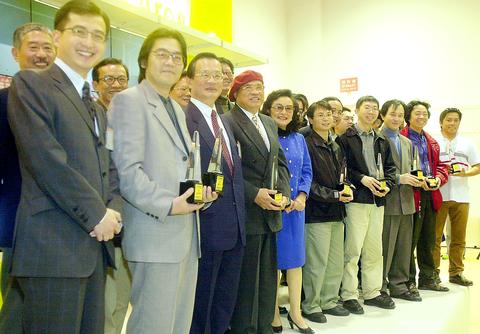
PHOTO: CHIANG YING-YING, TAIPEI TIMES
Before last week's event, local artists felt that their works -- and comic books in Taiwan especially -- were never considered a serious segment of the mass media. Rather, they were looked down upon and ignored by official government bodies.
"Comic books haven't really been accepted as a serious arm of the media. For years Taiwan's genuine comic voice has been buried and overshadowed by the furor concerning adult comic books," explained Chou Shien-tsong (

GRAPHIC COURTESY OF THE ARTIST
Needless to say there was no award category for adult comic materials and the controversy surrounding such material received only a cursory mention. Instead, talk was of the future of the local comic book industry. And how it is hoped that the event will prove a platform from which local artists can enter the global comic book arena.
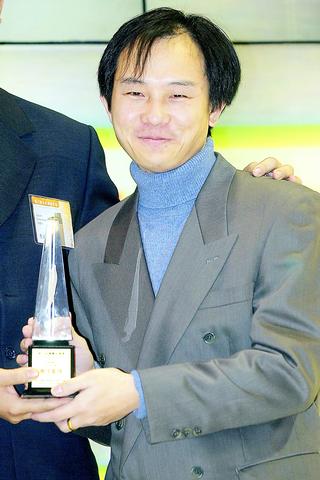
PHOTO: CHIANG YING-YING, TAIPEI TIMES
"It's a great chance for local artists to prove they are as talented as their international peers," said Tang Hsiang-lin (湯翔麟), winner of the award for the Most Popular Female Character for his highflying comic book heroine, Chiao Ling-er (趙靈兒). "Hopefully, next year we will not only see local artists vying for an award, but will also include works from international artists, thus proving that Taiwan's comic book creators have reached a truly international standard."
While the award ceremony itself took place last Thursday, the concept for the comic book awards began to take shape in December last year.
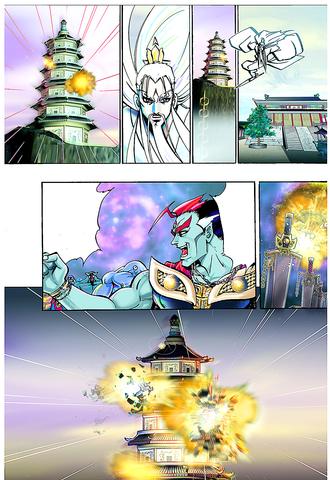
GRAPHIC COURTESY OF TANG HSIANG-LIN
In what was dubbed "The Season of the Comic," the nation's leading comic book artists hit the road and traveled around the nation holding seminars and discussion forums with fans at selected bookstores.

PHOTO: CHIANG YING-YING, TAIPEI TIMES
Towards the end of the month-long series of roadshows, the Comic Artists Labor Union and the Publishers' Development Foundation invited the participating artists to submit the most popular examples of their works to a panel of judges.
The committee, which included publishers and cartoonists, was asked to choose the top works from 11 categories. These included; best comic piece, best teenage comic, best romantic comic, best art, best story, best new star and best on-line animation.
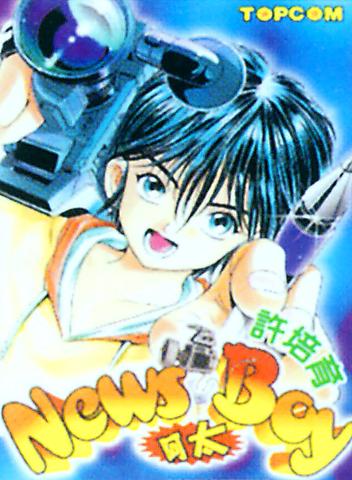
GRAPHIC COURTESY OF CALUT
Although the number of professional comic book artists in Taiwan is a far cry from that of Japan, the US and even South Korea, choosing winners was not an easy task. The quality of works submitted to the panel was, according to the director of the Comic Artists Union, of such high quality that it gave the panel a few headaches.
"We expected a few good entries, but were totally amazed at how many artists actually submitted their works," said the union's director. "Of course it wasn't only the sheer number of entrants that led to the lengthy judging process. The quality of the works was absolutely amazing, which made for lengthy discussions."
In addition to the string of awards conferred on today's generation of comic book artists, Liu Hsing-chin (
Over the past three decades, Liu has had over 200 of his comic book stories published, has produced countless kids' books and has seen his material appear is scores of educational materials.
Despite jokingly referring to his award as "The Elderly Person's Award," the veteran cartoonist was clearly overjoyed by the recognition he'd received. Along with expressing his thanks to the Comic Artists Union, Liu also had a few words of warning for his up and coming peers.
"With the inception of this award, I hope to see a great change in the way local artists look at their works," stated Liu. "Instead of simply continuing in the same vein, they will be forced to improve in order to compete in friendly competition with other cartoonists."
Not that those present needed to be reminded that the awards would spark fresh competition among local comic book artists. In fact, many were looking forward to competing in the annual event and felt that annual friendly competition will mean that local artists will be forced to improve and develop.
"You only have to look at the large number of comic book stores to see that the popularity of comics in Taiwan has exploded over the past 10 years. Sadly, however, most of the more popular books are Japanese," said Hsu Pei-yu (
The need for development in the local comic book industry was not the only hot item on the agendas of the local comic book artist's community. The awards also highlighted the need for a standardized base from which local comic book creators can work and learn.
"For nearly 50 years we've been inundated with comic books from Japan and Hong Kong. Which has meant that local artists have looked to these comics for inspiration and ideas," said Hsu. "Before these awards, local artists never had a standardized Taiwan base from which to work. Hopefully this will change now."
While the winning artists enjoyed the post-awards pomp, circumstance and congratulatory backslapping, not all attendees were as upbeat about the state of the local comic book scene.
Cheng Chun-huang (
"The comic book industry is like society in Taiwan. We have taken this from Japan and that from the US and neglected to build our own individual style," explained the lecturer. "The industry has found itself in the unenviable position of having a bit of this and a bit of that, but very little of its own true design, which means we are still a huge step behind Japan."
According to Cheng, as long as local artists continue to take inspiration for their artwork from Japanese Manga, a true Taiwan style will never materialize. The lack of uniqueness and localization has meant that imported Japanese manga comics will continue to outsell and prove more popular than the locally produced ones.
To add weight to his argument, the lecturer asked one of his recently graduated students to name his top 10 comics. The answer shocked even Cheng. Of the student's top 10 favorite titles not one was the work of a Taiwan comic book artist. The student opted instead for 10 Japanese comic titles.
Cheng is not alone in calling for a Taiwan comic identity. Although echoing these sentiments, the creator of chopsocky heroine Chiao Ling-er, Tang Hsiang-lin, feels that the most important step to localization should begin with the storylines rather than the artwork, which he feels has already branched away from its manga origins.
"To the untrained eye, many of the works appear to resemble manga. But if you look closer and study the artwork's strokes and angles, then there is quite a bit of difference," stated the young comic book artist. "The big problem lays with the plots and stories. The content should be relevant to Taiwan. Plots should be based on local issues and the characters should be based upon figures, both real and imaginary that are easily recognizable as Taiwanese."
Although not present for the awards ceremony, Stuart Levy, CEO of Tokyopop, the Tokyo-based media giant that informs the fashion-conscience Japanese public about what's hot and what's not, had both words of caution and encouragement for the local comic book-creating community.
"Five years ago, when I was in Korea, the market there was flooded with Japanese manga comics and the Korean comic book artists were still looking for their own comic book identity," said Levy. "Of course, the first thing they needed to do was to set their works in a typically Korean environment. After all, it's no good basing your super heroes' adventures in Tokyo if you live in Seoul, or Taipei, as readers cannot easily identify and relate to it."
It may be sometime until Taiwan has its own comic book art identity, but if local artists take a leaf out of their South Korean peers' book, then it could only a matter of time before Taiwan comic books begin to appear on bookstore shelves in Japan.
"A lot of Korean artists have learned from the past and are now branching out. Albeit pretty slowly. The good news, however, is that a Korean comic book character has recently begun appearing in Japan," said Levy. "So it is beginning to go the other way. And I hope to see more of this as it's really neat and should make the future of comic books in Asia very interesting indeed."
The present lack of identity that exists within the local comic book industry doesn't spell total doom and gloom for the local comics, however. Taiwan-produced comic books enjoy a substantial following in China, where, according to Cheng, the number of Taiwan comics available outnumber those produced in China four to one.
"Of course, one of the reasons Taiwan comic books outnumber those produced in China has a lot to do with the freedom to publish and the censorship of works by the communist government," said Cheng. "But we still enjoy a large part of the market, which is a start and is certainly progress."
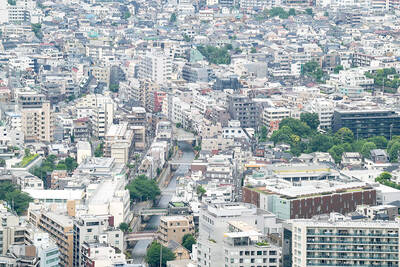
The canonical shot of an East Asian city is a night skyline studded with towering apartment and office buildings, bright with neon and plastic signage, a landscape of energy and modernity. Another classic image is the same city seen from above, in which identical apartment towers march across the city, spilling out over nearby geography, like stylized soldiers colonizing new territory in a board game. Densely populated dynamic conurbations of money, technological innovation and convenience, it is hard to see the cities of East Asia as what they truly are: necropolises. Why is this? The East Asian development model, with
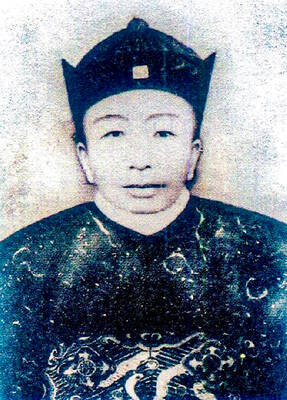
June 16 to June 22 The following flyer appeared on the streets of Hsinchu on June 12, 1895: “Taipei has already fallen to the Japanese barbarians, who have brought great misery to our land and people. We heard that the Japanese occupiers will tax our gardens, our houses, our bodies, and even our chickens, dogs, cows and pigs. They wear their hair wild, carve their teeth, tattoo their foreheads, wear strange clothes and speak a strange language. How can we be ruled by such people?” Posted by civilian militia leader Wu Tang-hsing (吳湯興), it was a call to arms to retake

This is a deeply unsettling period in Taiwan. Uncertainties are everywhere while everyone waits for a small army of other shoes to drop on nearly every front. During challenging times, interesting political changes can happen, yet all three major political parties are beset with scandals, strife and self-inflicted wounds. As the ruling party, the Democratic Progressive Party (DPP) is held accountable for not only the challenges to the party, but also the nation. Taiwan is geopolitically and economically under threat. Domestically, the administration is under siege by the opposition-controlled legislature and growing discontent with what opponents characterize as arrogant, autocratic

When Lisa, 20, laces into her ultra-high heels for her shift at a strip club in Ukraine’s Kharkiv, she knows that aside from dancing, she will have to comfort traumatized soldiers. Since Russia’s 2022 invasion, exhausted troops are the main clientele of the Flash Dancers club in the center of the northeastern city, just 20 kilometers from Russian forces. For some customers, it provides an “escape” from the war, said Valerya Zavatska — a 25-year-old law graduate who runs the club with her mother, an ex-dancer. But many are not there just for the show. They “want to talk about what hurts,” she